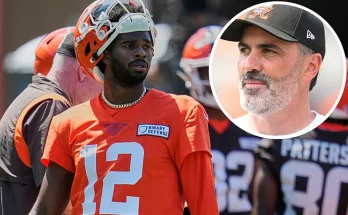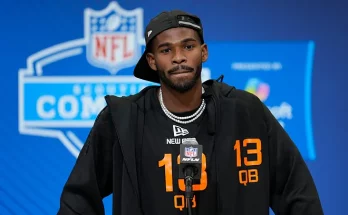In an era where roster turnover has become the norm and the transfer portal has redefined the landscape of college basketball, one program is bucking the trend. Duke basketball, under the leadership of head coach Jon Scheyer, is defying expectations by holding steady in a world full of chaos. For the first time in recent memory, not a single player from the Blue Devils’ roster is expected to enter the transfer portal.
Let that sink in.
While bluebloods and mid-majors alike are scrambling to patch holes and reload on the fly, Scheyer has managed to create something that feels almost mythical in today’s game—stability. For Duke, that’s more than just an offseason headline. It’s a seismic statement about culture, coaching, and commitment.
This isn’t just a coincidence. It’s the product of calculated moves, relationship-building, and a shift in the program’s internal philosophy. When Scheyer took over for Mike Krzyzewski, he was faced with the unenviable task of replacing a legend. The pressure was immense. The expectations? Astronomical. And yet, rather than trying to replicate Coach K’s every move, Scheyer began crafting his own identity—one rooted in transparency, empowerment, and trust.
The result? Buy-in.
And in this day and age, buy-in is everything. With Name, Image and Likeness (NIL) opportunities tempting players to seek greener pastures and the transfer portal offering a clean escape hatch, coaches can’t simply rely on tradition or past success to retain talent. Players want to feel valued. They want to grow. They want opportunity. Scheyer has provided all three.
The tone was set early. Throughout the 2024-25 season, Duke’s bench was tight-knit, active, and engaged—whether the team was up twenty or locked in a one-possession battle. The camaraderie extended beyond the court. Team dinners, film sessions, and even community events painted a picture of cohesion rarely seen in major programs. And it wasn’t just show. Players regularly praised the environment publicly and privately. There was no finger-pointing. No murmurs of discontent. Only a clear sense that everyone—from stars to role players—was pulling in the same direction.
It’s a testament to the system, but even more so to the relationships. Scheyer has cultivated an open-door policy, allowing for honest dialogue and individualized development plans. Every player has a roadmap. Every player knows where they stand. That level of clarity has reduced the urge to seek answers elsewhere.
Of course, winning helps. Duke was, once again, a powerhouse this past season—consistently ranked in the Top 10, and playing with a mix of youthful talent and veteran savvy. But it wasn’t just the results—it was the way the Blue Devils played. Fast-paced but disciplined, tough on defense, unselfish on offense. It was a brand of basketball that made players look good—and more importantly, feel good. When you’re contributing to a winning cause and developing along the way, why would you leave?
Even the reserves, who might have had legitimate grievances over playing time, have chosen to stay. That speaks volumes. In most programs, players buried on the bench are the first to test the portal. Not at Duke. Here, even those not logging major minutes are investing in the long game. They see the vision. They believe their moment will come.
And it’s not like Duke didn’t have players who could’ve left.
There were whispers. Every program has them. Rumors swirl, especially as the portal opens and rival schools begin their unofficial courtships. But at Duke, nothing stuck. The underclassmen who could have transferred to chase more immediate stardom? Staying. The upperclassmen who might’ve been persuaded by NIL deals at other schools? Staying. Even the fringe rotation guys, often the most portal-prone of all? Staying.
Scheyer deserves credit, but so do his assistants. The staff has gone all-in on player development and personalized attention. Whether it’s film breakdowns, extra work after practice, or emotional support during rough stretches, they’ve built a player-first infrastructure. The players, in turn, have responded with loyalty.
It’s also a reflection of the culture that’s quietly evolved in Durham. Duke has always been about excellence, but now it’s about patience, too. Not every player is expected to be a one-and-done. Not every freshman has to be a starter. There’s room for growth. There’s room for mistakes. And when players feel like they’re not being pushed out for the next shiny object, they’re far more likely to stay invested in their current situation.
And make no mistake: Duke’s talent pool remains elite. Cooper Flagg, the top recruit in the country, headlines the roster, and he’s surrounded by other five-star prospects and key veterans. Yet somehow, egos haven’t clashed. The chemistry is organic. That’s incredibly rare, especially on rosters this loaded.
Recruiting is often the trigger point for transfers. A new five-star arrives, and suddenly last year’s star is pushed to the side. But at Duke, the message has been consistent—compete, collaborate, and evolve. That message has resonated. Veterans mentor newcomers. Newcomers defer when necessary. Everyone eats, and everyone shines. That’s how you avoid the portal.
The other factor? Duke’s infrastructure. From world-class facilities to high-end nutritional programs to advanced analytics and mental health resources, the school invests heavily in the total well-being of its athletes. These aren’t just basketball players—they’re part of a holistic ecosystem designed to maximize their potential on and off the court.
And then, there’s the NIL strategy. Duke isn’t just handing out flashy checks. They’re building brand partnerships, financial literacy programs, and long-term marketing opportunities for their athletes. That strategic approach to NIL has been a major factor in retention. Players aren’t chasing gimmicks—they’re building careers.
Of course, critics will argue that Duke has always had an advantage. That bluebloods are immune to the transfer chaos because of their history, alumni support, and recruiting reach. But that’s not entirely true. Just ask Kentucky. Or Kansas. Or North Carolina. All of them have lost players—some stars, some role players—to the portal in recent years. History alone isn’t enough to keep rosters intact. Culture is.
And right now, Duke’s culture is rock solid.
This zero-transfer offseason isn’t just an anomaly. It’s the culmination of years of quiet progress under Jon Scheyer. He has taken the torch from Coach K and carried it into the modern era with grace and innovation. He has built trust. He has built relationships. And now, he’s reaping the rewards.
For the players, it means continuity. For the staff, it means more time to develop systems rather than replace personnel. For fans, it means familiarity. And for college basketball as a whole, it offers a glimmer of hope—that even in an age of chaos, some programs can still achieve something that feels like loyalty.
Does this guarantee a championship next season? Of course not. Basketball is unpredictable. Injuries happen. Upsets occur. But having a full roster of returners—players who know the system, trust the staff, and believe in the mission—gives Duke a massive edge.
And beyond the Xs and Os, this accomplishment sends a message. That Jon Scheyer is not just a good coach—he’s a program builder. He’s fostering something sustainable. Something players want to be part of, not escape from. In a time where transfers are the norm, Duke has become the exception. And in doing so, the Blue Devils are once again showing the rest of college basketball how it’s done.
No transfers. No defections. No drama.
Just Duke.
Just loyalty.
Just a team fully committed to each other, their coach, and the next step in their journey together.
And in today’s game, that might be the most impressive stat of all.



